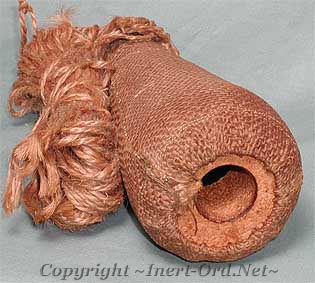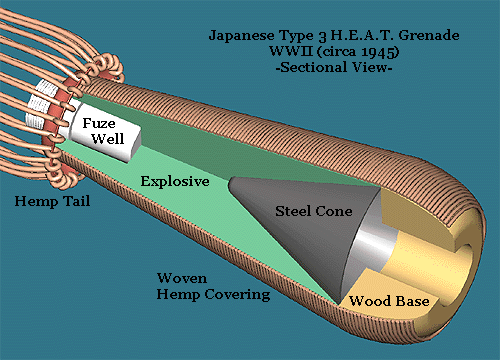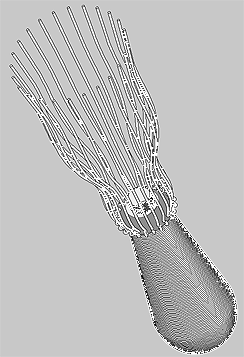
The Japanese were late to develop hollow charge ordnance, probably due to the lack of need as, unlike the Russian and German fronts in Europe, there just was not that much of a heavy armor threat in the early years of WWII.
The grenade consists of a thin steel cone mounted on a wooden standoff head. Explosive is cast around the cone and covered by a cloth bag. The upper end has a very simple impact base fuze mechanism. The hemp tail attached at the top would hopefully stabilize the grenade in flight, ensuring it struck the target properly.
This grenade would penetrate up to 70mm (almost 3") of armor.

 Interesting
that this example does not match the dimensional data for any of the above
mentioned types. It is longer, narrower at the base and has some internal
differences in the base/cone geometry. Also the tail and covering are the
same hemp material, where on the A,B,C types it seems the body covering
was cloth.
Interesting
that this example does not match the dimensional data for any of the above
mentioned types. It is longer, narrower at the base and has some internal
differences in the base/cone geometry. Also the tail and covering are the
same hemp material, where on the A,B,C types it seems the body covering
was cloth.

